“If the U.S. government is capable of killing innocent American citizens in cold blood, sometimes by convoluted schemes, what aren’t they capable of?’…. Tom O’Neill, from CHAOS; Charles Manson, the CIA, and the Secret History of the Sixties
Opening Addendum: This essay is geared to my blog readers, especially long-timers, plus others who already have a notion of how the world really works (HTWRW) in terms of history, i.e., that the ‘official story’ of any ‘big’ event in United States history (especially since WW2) is almost certainly false.
If the reader is not of this mind-set, or is unwilling to accept it provisionally (for argument’s sake), he/she is unlikely to understand my conclusions, let alone agree with them, no matter the evidence presented. For this reason, and for the sake of brevity, be advised that I am writing with the above premise about HTWRW a given. Call the premise the context of this essay.
For example, my conclusion that any particular individual ‘is CIA’ or ‘is a spook’ may be based on what appears to be skimpy evidence. I would ask interested parties who feel this way to do their own research on that individual, and, especially, to put my observations in the context of the premise, again, if only ‘for argument’s sake’. This having been done, the currently ‘naïve’ reader may emerge from his/her readings with an enhanced historical perspective.
To give one example among many: The events of the Manson/Tate extravaganza (I was ‘there’ and it truly was such) took place during the calendar year following the deep state (powers-that-be, PTB) assassinations of Martin Luther King, Jr. and Robert Kennedy (for both crimes, see the evidence exposed by William Pepper, among others). If the reader doubts my interpretations here, i.e., insists that the ‘official story’ of these assassinations (plus JFK) are just fine and dandy, there is no point in reading further.
Forewarned Isn’t Always Forearmed
To clarify why I carefully dissect certain historical issues while letting others lay – and for the sake of keeping this essay to manageable length (sorry for having failed in this) – I’m going to blurt my main conclusions right up front. This way, as you read (and view the images) you can better catch my drift:
- Charles Manson was a deep cover CIA operative with his parole officer as handler. Given the evidence that Manson was a ‘lifetime actor’, there is nothing about the man or his background that can be taken as literal truth.
- The Manson/Tate Event (henceforth referred to as ‘The Event’) was a black op run by CIA’s Operation CHAOS, with the cooperation of the FBI’s COINTELPRO, plus various law enforcement offices, mainly the L.A.P.D. and L.A.S.O. (sheriff’s office), plus several federal agencies. The members of the ‘Manson Family’ who were convicted of the crimes were likewise part of the op from the very beginning. Which lessor Family members were privy to the op, and which were useful idiots, is unclear.
- The ‘murders’ on August 9 (technically, the night of the 8th) at 10050 Cielo Drive in Los Angeles were a fabrication, with the possible exception of Steven Parent, who most likely was actually murdered. (He may have stumbled onto the scene while evidence was being planted and had to be eliminated.)
The LaBianca murders of August 10 were real, carried out by a black ops team, which made it look like another crime by the Family.
Other murders – that of Gary Hinman being one example – may or may not have been part of ‘the script,’ and fabricated. There was a lot of ‘improvisation’ by the participants in The Event, including by the various ‘legal’ and governmental ‘actors,’ but especially by the Family members, who, predictably, given the times and the nature of the op, often went ‘off script’.
- The trial was scripted from start to finish, with Vincent Bugliosi being the principal ‘on the ground’ planner of the
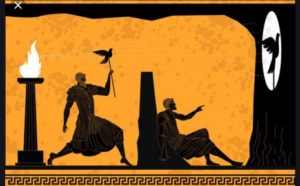 ‘legalities’. Various judges, parole officers, and other bureaucrats, plus of course law enforcement personnel, were to some extent knowing participants, although, like all black ops, everything about The Event was highly compartmentalized.
‘legalities’. Various judges, parole officers, and other bureaucrats, plus of course law enforcement personnel, were to some extent knowing participants, although, like all black ops, everything about The Event was highly compartmentalized. - Given that the ‘celebrity’ murders were fabricated by an ensemble of actors, no one actually went to prison (not counting a few days in local jails by the major players). Most of the evidence of this will be sprinkled throughout this essay in the form of photos and videos indicating fabricated jail terms. Obviously, ‘records’ in whatever form, are meaningless in a situation like this. (Other evidence of this will be included in Part Two, if I decide to press on.)
- As mentioned above, this essay is aimed at a savvy readership, one that has already come to the conclusion that we are being lied to about… well, let’s start with the term ‘a lot’ and work our way up the deceit-scale towards ‘everything’.
- Regarding the term ‘spook’: I herein use it as a loose reference to any knowing participant in the op, however unspecific and/or misleading that knowledge may be. The line between spook and useful idiot is often blurry. There are ‘spooks’ as in formally trained black ops agents (‘Jack Bauer’ types as seen in various movies/TV shows) –
Sharon’s Tate’s father, Paul Tate being one relevant example (a colonel in ONI, Navy Intelligence) – and there are those playing roles, either ‘official’, as in a ‘government official’ such as prosecutor Vincent Bugliosi or Roger Smith, Manson’s ‘parole officer’ (among his other ‘duties’), or unofficial, such as the major Manson followers, especially those accused of the crimes and who ‘went to prison’ as a result.
- Given it would take a book to properly describe Operation CHAOS, I’ll just paraphrase O’Neill’s brief description of it as an illegal CIA operation, in conjunction with the FBI’s COINTELPRO, meant to discredit/destroy the anti-war and hippie movements, no matter what it takes. (Their emphasis)
- Finally, I would alert the reader to the multi-purposefulness of this essay. Although it started as a book review, if a not-so-simple one, it grew in the telling to a deep-dive multi-leveled investigation, not only on the nature of The Event, but as an exposé of the media resources that are behind the falsification or outright creation of ‘history’, the author of the book in question, Tom O’Neill, being one such resource.
That I use an outside resource (the persona known as ‘Miles Mathis’ (MM) more below) that I will brand as a part of the apparatus I seek to expose is a clear sign that as a culture we have descended into the depths of a mind control morass that even Orwell could not have imagined.
Also be advised that in order to comprehend The Event’s scale and complexity the reader will need to get through this rather lengthy essay plus the even longer one by MM. Ironically (and there is plenty more irony to come), for a complete picture it is not absolutely necessary to read the O’Neill book (I don’t wish to promote it any way), which we will delve into now, starting with my initial impression of it before this investigation began in earnest…
A Book Review?
This new book on the Manson/Tate ‘event’, Chaos; Charles Mason, the CIA and the Secret History of the 1960s, is such aggravating reading (or listening, in my case) I probably won’t get through it. That I paid money for it and therefore encouraged the media apparatus behind it is an added irritant. The author, Tom O’Neill, supposedly has been ‘obsessively’ (in so many words endlessly repeated) researching the Manson/Tate 1969 mass-murder media extravaganza for over 20 years, yet within a few minutes (listening to the audiobook) I had to hit pause and say ‘What a minute,’ to consider something he’d missed.
O’Neill describes how Manson and his three female co-defendants had carved bloody ‘X’s into their foreheads at the beginning of their trial. Mmmm, I found myself thinking… in his decades of obsessive research, did the author ever ask himself how maximum security defendants (three, in separate cells) all got their hands on knives or any sharp instruments with which to do the deed? I mean given that they confiscate even belts and shoelaces so prisoners can’t harm themselves or someone else. O’Neill describes the wounds as being ‘like cut with a razor,’ and just barrels on with his analysis of events without missing a beat.
A few minutes later I was subjected to another unaccountably sloppy story-turn, and which O’Neill likewise fails to notice. (As a former book, screen and TV writer, I tend to look at story anomalies in ‘fiction’ in the same manner as ‘non-fiction’: yes, two terms with a very fine dividing line. That we do have a fictional tale with The Event [as you will see] makes the comparison with script writing/story telling doubly valid.)
In crafting a tale the writer’s first challenge is a device, an event, that will launch the main source of conflict (a.k.a. ‘the plot’); script-writing guru’s refer to it as ‘the inciting incident.’ Often the inciting incident is the meeting of two characters, perhaps the protagonist and antagonist.
With The Event, the device, the incident, is the meeting of Manson Family member Tex Watson with the Beach Boys’ drummer, Dennis Wilson (this led to Manson’s relationship with Wilson, which in turn led to music producer Terry Melcher’s meeting Manson, and so forth to the ‘events’ of August 9, 1969 at the Tate house.)
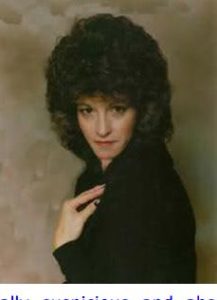
Let’s start looking at evidence that no one is in jail. This is supposed to be Susan Atkins. Appears to be in her 30s, although she’s been ‘in jail’ for more than a decade here. Think they give out wigs and allow long fingernails in level 3 lockdown? Or pro-photogs?
How are we told this portentous meeting came about? Tex picks up Dennis Wilson hitchhiking. Got that? No, I don’t have it reversed. In O’Neill’s book and in all the books, Tex Watson, a hippie and no-account bum who doesn’t even own a car, picks up millionaire Dennis Wilson hitchhiking.
Do you believe that? Seriously, try to picture it. Try picturing, say, Bruce Springsteen meeting… a bum that would change his life… by sticking out his thumb on the Jersey Turnpike.
After 20 years of thinking about it, in his ‘obsessively researched’ book, Tom O’Neill never saw a problem here. (O’Neill describes this absurd event as ‘the incident that would change both their lives.’ True enough, for without it, the supposed chain of cause-and-effect would never have gotten started.)
In cases like this O’Neill often can’t keep his story straight. In a podcast interview promoting his book he says…
Yeah, well, he [Manson] penetrated the rock ‘n’ roll scene, because two of the girls are picked up hitchhiking by Dennis Wilson, the drummer for the Beach Boys, who was kind of the wild Beach Boy, you know, the one that was the real extrovert, the best-looking of them… He picked up two of the girls hitchhiking, brought them home, did what he did with them, and they went back to the Spahn Ranch, which was a kind of broken-down western movie ranch about 45 minutes outside of LA in Chatsworth. (My emphasis)
This is not a nitpicky detail either, since without a ‘coincidental’ meeting of some sort, there would have been no Event. And the above, as the saying more or less goes, isn’t even the tip of the ‘berg, in terms of unlikely happenstances. In the end, it was the sheer volume of anomalies that would get my undivided attention…
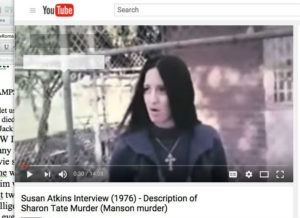
See that silver crusifix? A big time no-no in max security prisons, as they can be sharpened and used as shivs.
Bait and Switch
It’s a week later and not only did I get through O’Neill’s book (again, the audio version) but did so several times; my view of the book has done a turnabout of sorts. My outrage at being again suckered by a ‘nonfiction’ ‘official story’ gradually tempered as a wonderful irony occurred to me: It’s just possible that we can thank the Western Intelligence psy op committee known as ‘Miles Mathis’ for the book’s existence, and, as it turns out, for the connecting links that MM either purposely left out or missed in his limited hangout exposure of the Manson/Tate ‘murders’ as a fraud from the bottom up, i.e., no one (at the Tate house) died on August 9, 1969. (I will conclude that although the Tate murders were fraudulent, others related to the case were not.)
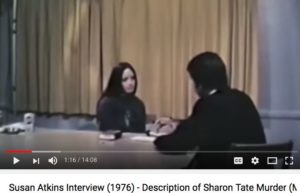
Does this look like a maximum security prison? And anyway, level 3 convicts are not allowed non-family visitors, except their attorneys. The Manson ‘prisoners’ break all the rules of incarceration.
Addendum: Why did I title this section ‘Bait and Switch? I assumed from the subtitle of Chaos: Charles Manson, the CIA, and the Secret History of the Sixties there would be something about ‘the CIA’ and ‘the Secret History or the Sixties’. Aside from there being no secret history anywhere in his book (other than ‘mysteries’ O’Neill dare not solve), the title promises to link the illegal CIA operation called CHAOS to Charles Manson. When it comes down to it, and in spite of the mountains of evidence inferring exactly that – and between stuttering avoidances of obvious conclusions or even lines of inquiry — he then tells us he ‘doesn’t know’ what happened.
O’Neill’s stammering equivocation whenever anything referring to the title comes up is almost breathtaking. In fact, he tells us that at one point, before he was able to pen the word ‘CIA’ (meaning it might be connected to something) O’Neill actually writes, ‘I had to take a deep breath.’ This was one of those moments (among many) that elicited a yawl from yours truly, and then: ‘What kind of fucking breath did you take before writing your fucking title, asshole!’
Anyone interested in actual research on the sixties should consider Dave McGowan’s (RIP) Weird Scenes Inside the Canyon, which properly describes many of the players O’Neill misdirects us on. Also see Jan Irvin/Joe Atwill’s exposé on the Grateful Dead (plus others) as active, formal CIA counterculture plants/creators. (Yes, more reading assignments, but well worth your time, I assure you, if you’re serious about HTWRW, i.e., how the world really works.)
Between MM’s essay and O’Neill’s book we may have a sort of dueling PTB (powers-that-be) psy ops. And/or, and I prefer this more complex interpretation, in the PTB’s desire to have its ‘history’ of particularly successful psy ops put ‘on the record’ (while not ‘believed’ by ‘anyone important’), it took two approaches, two tomes, first MM’s (in 2014), then the 2019 ‘mopping up’ by Tom O’Neill, although the latter is simultaneously meant to discredit the former, or at least distract from it. If this sounds contradictory (or even nonsensical), welcome to the wonderful world of PTB psy opery.
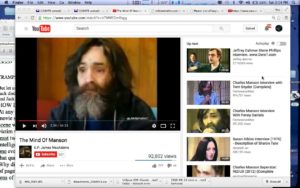
Until very recently, no penal system in the country allowed beards of this length. (We’re just getting started.)
But no matter the motive behind its inception (dealt with further below), as I got deeper into CHAOS I also realized that it filled in details, mainly players, that MM had ‘neglected’ to mention, either by design or negligence (the former being much more likely). It manages to do this without spilling any important new truths.
As a ‘continue the lie’ exercise in limited hangout/misdirection, O’Neill’s book does its duty, and you can bet this was one of the rationales for it, if not the underlying motive. Keep the horror of the murders in the zeitgeist while making sure that the real truth stays hidden.
After MM’s online essay in 2014, there likely was fear that the bean spillage about the murders being faked might go viral, at least amongst the ‘truther’ contingent. What to do? Hit the stands with a ‘controversial’ book that spills some new beans but not the beans. Classic limited hangout. As ‘Miles Mathis’ himself tells us, with the Manson/Tate Event, ‘conspiracy theories’ are welcome – the more the merrier, actually – as long as people believe that The Event, the murders, actually happened. (No fewer than eight books – plus one ‘opera’ on tape – on the Manson/Tate event have appeared just in 2018 and 2019, a further indication that yes, the PTB are not done with this half century-old black op, and, further, something important is clearly up now.)
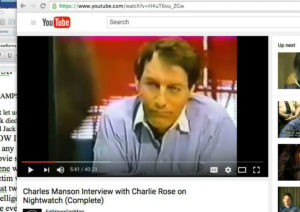
Charlie R interviews Charlie M. Are those bars on the windows or blinds? The latter. Where are we here? Because we’re not in a prison.
Addendum: MM actually goes much, much, further, telling us that virtually all the ‘assassinations’ throughout history were fraudulent (no one died). Yes, an absurd notion – which should totally discredit anything he writes — but, again, welcome to the world of PTB psy ops. More to come on this but at some point the interested reader should also check out my Open Letter to Miles Mathis, which describes the ‘tells’ that MM – in spite of ‘his’ ground-breaking work on The Event — is not only ‘dirty, ’ but a full-blown PTB think tank. His Manson/Tate essay was a ‘dangle,’ to gain reader trust.
In terms of PTB motive for the Manson/Tate Event, ‘MM’ tells us:
‘When people [us] are so stupid they don’t even know you are fucking with them, it isn’t fun anymore. It isn’t fun being a bad guy when no one even knows how bad you are. That is why they have graduated to 9/11 and Sandy Hook and everything in between. They need to be noticed. They need to be appreciated as bad guys. Just as I need my audience and you need yours, they need their audience. They need someone to get the jokes. Just as Moriarty needed Sherlock Holmes, these people need me [‘Miles Mathis’]… No one likes to be fully invisible. Even the spooks don’t like to be fully invisible. They like to get away with everything, but it is much preferable to be visible while you are getting away with it, don’t you see?’
Notice how, while telling us an actual truth here, MM manages to discredit not only ‘conspiracy theories’ in general, but in subtext throws doubt on his own work, resulting in a vague sense of confusion and hopelessness in those seeking historical truth. Brilliant wordplay, and which I will refer to as ‘NLP’: Neuro-linguistic programing refers to a version of verbal/prose mind control that says one thing on the surface, but plants a very different idea in the subconscious.
Unlimited Hangouts
Over the past decade I’ve come to the conclusion that virtually (not quite literally) all the media – and this very much includes the ‘alternate media’ – are, to one extent or another, under the control of the PTB. But enough truths leak out via a few genuine researchers, plus accidents, slipups, and limited hangout psy ops (like MM’s essay and Tom O’Neill’s book), that we can get a handle on HTWRW, especially by paying close attention, and cross-referencing with other sources. Either accidentally or as part of their plan, by combining the MM piece with O’Neill’s CHAOS, we can pretty much figure out the ‘who’s’ and ‘what’s’ of the Manson/Tate Event. (O’Neill takes the usual disinformation route with CHAOS, summing it up by claiming that ‘we’ll never really know the whole truth’ – echoing the JFK ‘alt media’ limited hangouts that say exactly this, when actually we pretty much know who was behind the assassination and why.)
The only more blatant recent limited hangout that comes to mind is Hampton Sides’s travesty, Hellhound on his Trail, which assumes that James Earl Ray assassinated Martin Luther King, Jr. in 1968. What Sides fails to mention is that a jury trial in 1991 exonerated Ray and fingered the FBI, the CIA, the Memphis P.D, plus an army sniper team as co-conspirators in MLK’s murder (see my film, Water Time, plus the books by William Pepper).
Same deal here, in a sense, although it gets complicated since the crime itself had to be faked; this is the fact that must be kept from public view. But as you read on, keep in mind that both referred-to works on The Event are from state moles (spooks), limited hangouts of the first order. (Another obvious tell that MM is itself a psy op is his essay claiming that MLK was an agent of the PTB and faked his death in Memphis. As opposed to his Tate/Manson work (and some others), this one is pure and obvious dreck, with so many holes as to be an embarrassment. So much so that I’m thinking ‘they’ changed their minds and decided to discredit their own ‘good’ work, i.e., essays like the one referred to here.)
But it’s true, folks… All anyone need do to know that O’Neill is ‘dirty’ is to read the MM essay, then ask him/herself a few obvious questions. (Or, if the length is too daunting, scroll down to the autopsy and crime scene analyses, which get to the heart of the matter in proving the crime as a fabricated event.)
Addendum: That O’Neill, in his faux-obsession over the case, fails to even mention the autopsy is a dead giveaway that we have a big time veracity problem. I mean not a word in 500 dense-prose pages. Ditto the crime scene anomalies.
With his faux-self-reflective agonizing and protracted bouts of ‘self-doubt’ — plus whiny disinfo on the history of his research — O’Neill does a good job of distracting us from the fact that his exposé on a ‘botched’ murder investigation includes no mention of autopsy or crime scene foul ups.
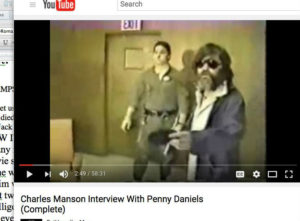
If it looks like Charlie walked in off the street, he probably did: No beards, no jewelry, no sunglasses allowed at level 3. And the guard? Not a reg uniform. The interview also shows windows with no bars. Pu-lease!
If O’Neill is ‘innocent’ of conscious government connivery, we have to believe that he never came across MM’s essay exposing some of the more blatant anomalies in the Manson/Tate affair. That this is unlikely is an understatement, considering that the MM essay came out nearly five years before O’Neill’s research was done-done (the publication date of CHAOS), and how easy, no, inevitable, running across the link would have been for an ‘obsessive’ information hound who, presumably, knows how to net-search for subtle clues (not that the MM is anything close to subtle). MM provides many details that should have made it into O’Neill’s book, but which were indicative of a faked crime scene, so they had to be left out. And I will provide still more, come across in little more than two weeks’ researching, as compared to O’Neill’s twenty years.
In fact, let’s list some anomalies that CHAOS somehow missed (aside from the ones already mentioned, i.e., the forehead Xs and millionaires hitchhiking).
Heard Any Lawyer Jokes Lately?
If the murders were faked, logically, so was the trial, plus the prison terms of the ‘convictees’. So let’s ask ourselves if there is evidence that no one went to jail (aside from initially, right after their arrests). Turns out there is a ridiculous amount of such evidence. MM provides some, and I easily found more.
The following video is an early indication that the trial was scripted. As O’Neill himself tells us in CHAOS, the lawyer depicted, Richard Caballero, was a state plant.
Although there is plenty more to come, this one conclusion by O’Neill should be enough to cause any reader (or researcher) to realize that something is severely amiss with the story we have been told by… everyone… for the last half-century. And any researcher worth his salt would understand that with a planted defense attorney, all bets are off, i.e., nothing about the case should be taken at face value.
Notice how, in the video, and this is even before the Grand Jury indictments, Caballero ‘outlines’ the crime scene scenario (all movie scripts start with outlines), setting up the horrific details to come, and while he’s at it pretty much convicts his own client in the process, putting her at the crime scene and blurting a motive. Although O’Neill mentions all this, he is either unable or unwilling to consider the implications.
Caballero should have been disbarred for convicting his client and thusly poisoning the jury pool; nothing happened to him. (And it just gets worse…) Prior to the trial — and this is according to O’Neill — Caballero and others, including D.A. officials, colluded in the publishing of a 6,000 word ‘description’ of the Tate house ‘slaughter,’ supposedly penned by the most blatantly grisly of the Manson girls, Susan Atkins. Led by a front page spread in the L.A. Times, the story spiraled into a world-wide sensation, exacerbating the fear and loathing already engendered in the zeitgeist by the four months of paranoia before the hippie-perps were caught. The four months lag between ‘crime’ and arrests was a vital aspect of The Event-as-psy op; Los Angeles residents (plus to an extent the whole country) lived in headline-induced terror for all
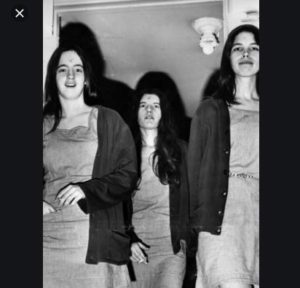
Let’s look at the girls. Notice any cuffs or restraints of any kind? And again, how did they slice the Xs in their foreheads if they were in solitary lockdown and closely watched, as they would have been?
that time.
Addendum: That the time lag was purposeful is evidenced by the (literally) unbelievable incompetence of the investigators, who had Family member Bobby Beausoleil in the clink for a virtually identical homicide, but somehow ‘failed’ to notice.
Two weeks before The Event Bobby and other Manson cohorts tortured family associate Gary Hinman for two days – with Manson himself slicing off half of Hinman’s ear – then killed him with multiple knife wounds.
This of course should have been enough to raise a big red flag connecting Manson followers to The Event but in case it wasn’t, Bobby and friends had also scrawled in blood the words ‘Political Piggy’ on Hinman’s wall: At the Tate and LaBianca crime scenes, they’d blood-scrawled ‘Pig’. (Keep in mind that information like this is from O’Neill’s book or other mainstream sources: We are assuming the official story is true to see if it holds up. It does not.)
Apparently a nearby and recent knife-slaughter with a blood message including the word ‘pig’ didn’t sound familiar to the L.A.P.D…. or maybe ‘Pig’ is sufficiently distinctive from… ‘Piggy’…
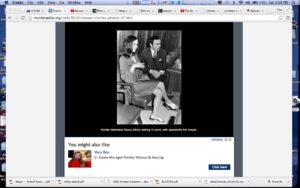
Susan Atkins with the planted defense attorney, Richard Caballero. Where are the cuffs for this mass murderer?
…but you get the point, i.e., there’s something very wrong here. O’Neill understood the problem, and goes to great journalistic lengths, with wordage galore, to get to the bottom of it, but comes up completely empty. Justifiably, he just couldn’t believe the cops were that stupid. Although In the end it was, ‘Duh, I dunno’, all O’Neill had to do to understand the ‘incompetence’ was ask himself ‘Cui bono?’, who benefits, then look at the (main) title to his book.
CHAOS, the CIA op (plus FBI’s COINTELPRO), benefited, and big time, from the four month delay between the Tate/LaBianca killings and the Manson Family arrests.
Don’t see it? Well, you hadda be there (and I was, more or less). The fear, no, the utter terror that the Los Angeles area (and to an extent, the country) experienced in the wake of the two murder scenes was… nothing short of incredible; the engendered fear was comparable to the aftermath of 9/11, although on a more personal level (9/11 being another manufactured fear-mongering event).
But in this case, it was the fear of unknown killers. Had the cops busted the Family right away, i.e., if the crimes were ‘solved,’ people could relax and enjoy the morbid show that was the trial.
So it was vital that the arrests were delayed.
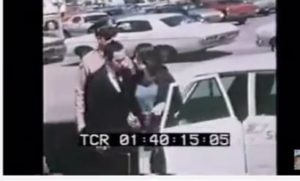
On the street, mass murderer Atkins with no cuffs and with ‘Manson followers’ everywhere: One could bop the lone cop and Susan bolts. Easy as that. This is actually ridiculous.
An addendum to the addendum: As with the four month delay, in order to instill real fear, there had to be another, a second, murder scene, and that came the following night, on August 10th at the LaBiancas. See, it took another, apparently random slaughter, to engender real and deep and valid terror. Now it literally could be anyone next; the Tate murders could have been motivated… rational… understandable… but with the LaBianca killings – same M.O., down to the ‘pig’ in blood – there was a sort of terror-tipping point.
But for our purposes – The Event as black op plus O’Neill as disinfo agent – I’ll only dwell on one point, and the significance is that O’Neill ‘somehow’ missed it: There were no perpetrator fingerprints at the LaBianca murder scene.
The story is – and this is from the ‘killers’ – that after they tortured and killed the LaBiancas, they took their time and hung out at the scene, pillaging the ‘fridge and even taking showers before leaving. They were all over the house doing things.
Yet they left no fingerprints. A forensic expert claimed that even the fork that was left stuck in Leno’s belly had no prints, ‘not even a smudge.’ ‘It was like they wiped down the crime scene,’ he said.
But wiping down crime scenes is not the Manson followers’ m.o.; quite the reverse; they made a point of being messy in their shenanigans. Plus, according to the cops, the LaBianca’s prints were there, and their son’s too. So no one ‘wiped’ the scene.
The perps, the real killers, were a black ops team, and wore gloves.
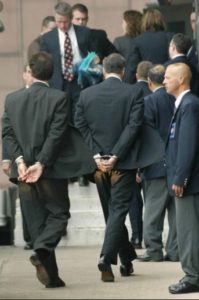
These are white collar perps, not blood thirsty savages. How come the cuffs? Probably because they really ARE going to jail.
There is no other reasonable explanation for the lack of fingerprints. Full stop.
How did O’Neill miss this? I found the newspaper article on my second day of looking into the matter. But right: O’Neill didn’t have space for details like crime scene evidence or autopsies.
One last… detail… on fingerprints that O’Neill also missed: There were 25 unidentified fingerprints at the Tate house. After screening everyone who could have ever been at the house (dozens) and eliminating the victims and the Mansonites and going through all the national databases, there were still twenty-five sets that could not be identified.
Give that some thought. (For the lazy-witted: Spooks’ prints would not have showed up in data-bases)
But back to Susan Atkins and the story behind her terror-inducing essay, which alone proves that all involved – the judge, Charles Older, D.A. Bugliosi (and everyone above him), the ‘defense’ lawyers, and the accused themselves – were to some extent in on the stupendous hoax. O’Neill labels Caballero as a prosecution plant, but… somehow… doesn’t see the larger implications, or deal with who else was a plant. I don’t have the space here to dive into this issue, but suffice to say that the Atkins-by-lined horror story appeared after the judge issued a gag order applying to anyone involved. In other words, all those mentioned above should have been jailed for contempt.
The judge did nothing. Not about the published-account travesty, nor about Caballero’s statements to the press incriminating his client (the above video being only one example), nor about… you name it, literally. Fill in the blank.
Regarding O’Neill’s reporting, again, he outright states that Caballero was a prosecution plant. As is the case constantly in his book, O’Neill fails to do what any competent researcher would do, i.e., ‘follow the evidence’ to its logical conclusion. Meaning, if Atkin’s lawyer was a plant, right there by definition you have a trial that is a legal farce – with everyone concerned, especially including the lead prosecutor, Vincent Bugliosi, committing high crimes against the state — if not a total, scripted fraud. (There is more to come proving the latter, aside from the photo evidence I have sprinkled across this essay showing that no one was in real, lock down ‘custody’.)
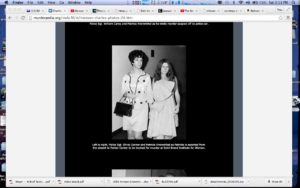
This is Krenwinkel getting off an airplane flight, with one ‘matron’ and no restraints. With Manson nutcases everywhere on the news, why doesn’t she just… escape?
O’Neill’s explanation for the judge putting up with all of the above: ‘Maybe he just liked the added publicity.’ Riiiight.
One More Lawyer Joke
Although it was Vince Bugliosi who rose to rock-star fame and fortune as prosecutor, in the beginning he was paired with Aaron Stovitz, who was removed from the case for a remark he made to the press that the head of the D.A.’s office found somehow inappropriate. You’ve seen a tiny bit of ‘inappropriateness’ from an involved attorney and know about Atkins’s 6,000 word tome, which was nothing short of hyper-inappropriate, so what beans could Stovity have possibly spilled? Here’s a bit from the L.A. Times Stovitz obit from a few years ago: You’ll love this.
Stovitz, who was removed [as prosecutor] in September 1970 by then-Dist. Atty. Evelle Younger, later said he wasn’t bitter over the decision but thought his remark was “innocuous.”
What was the remark? Referring to Susan Atkins…
“She’s putting on an act worthy of Sarah Bernhardt,” United Press International quoted Stovitz as saying.

Here are the regulations for prisoner travel. Read for yourself then explain these photos. Can’t? I can.
Stovitz’s branding of Atkins as an actor was not only ‘too close’ to the truth but, literally, was the truth. Atkins, plus the whole gang, were, in effect, actors playing roles, and Younger/Stovitz knew it. Stovitz had gotten too cute with his comparison. Think about it. On the surface, the remark only meant that Atkins was untruthful, which is a fair-game statement by a prosecutor (and totally harmless compared to what everyone else was saying). So why remove him from the case? As a warning to the rest of the spooks to be careful with the press…
Context Is Everything
One of the spooks involved in spreading Atkins’s lurid tell-all world-wide was a character by the name of Lawrence Schiller, a chum of Atkins’s then-lawyer, spook Richard Caballero, the prosecution’s plant. Schiller’s other 1960s era journalistic coup was the publishing of Jack Ruby’s death bed ‘confession’ ‘verifying’ that there was no conspiracy in the JFK assassination.
Addendum: Two ancillary points here: First, anyone who accepts ‘no conspiracy’ in the JFK event should not be reading this essay, and, Two, anyone who goes public or to the media with ‘evidence’ of ‘no conspiracy’ is working for the other side, i.e, is a spook (probably with Operation Mockingbird). Full stop.
Another Schiller-tie to spookdom is his close working relationship to Norman Mailer (the two shared a Pulitzer for Executioner’s Song), an agency asset via Operation Mockingbird, probably even before his mammoth paean to the
cold war agency, Harlot’s Ghost. Here’s a N.Y. Times headline that says it all…
Mailer Visits C.I.A. and Finds He’s in Friendly Territory. Really.
…yes, Really… a couple paragraphs in, we’re told…
But why was Norman Mailer, the lifelong promoter of the left, receiving a standing ovation from a standing-room-only crowd of more than 500 officials who crammed into the bubble-topped auditorium to hear him?
Spooks don’t give standing ovations to anyone who is not one of them.
In Mark Lane’s Destiny Betrayed, Schiller is branded an FBI asset in his deceitful promotion of the Warren Commission Report. One would think that O’Neill would have noticed some of the evidence that Schiller was working for the same PTB faction that had committed past atrocities…
Addendum: Anyone who hasn’t given Operation Mockingbird a good look is missing an important CIA limited hangout admission. (I say ‘admission’ because their charter precludes them from ops within the U.S. Right: A laughable concept.)
Start with Carl Bernstein’s 1976 piece in Rolling Stone, which puts the number of spooks in mainstream media at 400; it’s safe to assume it was way worse then, and is way, way worse now. That Mockingbird and CHAOS are two closely linked ops should be obvious. What CHAOS does, Mockingbird covers up, blames on someone else, or distracts us from. Tom O’Neill and his book are part of this apparatus.
Since my thesis is that The Event was a fraud from the ‘crime’ to the ‘trial’ to the ‘jail sentences,’ (and that Tom O’Neill is a continuing player), I should be able to show that the top official at the D.A.’s office is ‘one of them,’ i.e., a spook; otherwise a fake trial would never have happened, let alone the fabricated crime scene. Let’s look at top D.A. dog Evelle Younger and see if he’s the type to supervise a black op of this magnitude from his then-top spot in California law enforcement…
Younger, who would become the California Attorney General the year after the trial (a reward for a job well done?) and later run for governor, also oversaw the trial of Sirhan Sirhan, the patsy in the RFK assassination. This should be enough (for any thinking person) to brand him a spook with direct ties to CHAOS, but if you need more, here’s a lead paragraph from good old Wikipedia…
After graduating law school, Younger became an FBI Special Agent. At the age of 24, when he was one of J. Edgar Hoover‘s top agents, Younger became a member of CIA forerunner the Office of Strategic Services, serving in the Burma-China-India theater during World War II.[3]
That Younger was a top agent under Hoover and admittedly was CIA should be enough to peg him as the highest-
level California enabler (if not planner) of The Event.
As we’ll see, on the federal level the planning/enabling goes as far up as the then-U.S. Attorney General, John Mitchell, who did his part by preventing Manson’s ‘Parole File’ from being entered as evidence in Manson’s defense at the trial, even during the penalty phase. This is utterly unheard of (and should have been enough to nullify the trial itself) and points us to the file as probable evidence of black opery.
But the over-riding point from our perspective – that Manson was a deep cover CIA operative being covered for by O’Neill’s book – is the very participation of the U.S. Attorney General. How in hell was it his concern that an accused ex-con’s parole file stays secret?
More on this when look at Manson’s ‘parole officer’ – whom we’ll peg as Manson’s CIA ‘handler’ – and who saw to it that Manson and his girls stayed at large no matter what crimes they were busted for in the months leading up to The Event.
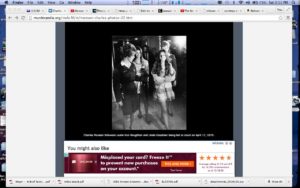
I have dozens of these, never with cuffs on the murderers. Notice the wig on the female ‘cop’? What’s with that?
See, this is all what I mean by context. (Speaking of which, consider that Tricky Dick was in the White House at the time.) When someone is in some way connected to a known spook or spook agency and is also involved in a zeitgeist-shaking event, you can short-hand that person as being ‘dirty’ (a PTB mole) to save time and mental energy (maybe one out of a hundred times you’ll be wrong). Over a decade of research has told me that infiltration of American institutions really is that pervasive. When everyone involved in ‘an event’ can be linked to a clandestine PTB agency – and such is the case here – you have to start from the very premise in your assumption that nothing is as it seems. Tom O’Neill fails utterly in this, and does so purposefully, in my view.
Another Deep Dive
I would have to deem CHAOS useless as far as new and important information goes, except for the revelation of some names, participants in the op whom MM ‘missed’, either by design (by far most likely) or lack of due diligence.
In the case of one Reeve Witson, I say by design because, from O’Neill’s ‘surface’ description of him (and surface is as far as O’Neill goes), Witson was the likely field handler/controller of the whole affair, and ‘they’ didn’t want that nugget made public. (Or, a deep dive into Reeve Witson might expose other, unrelated spook abominations.)
Addendum: Keep in mind that it’s likely that there is dissension amongst the PTB factions as to what information is
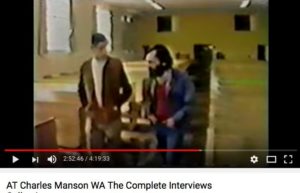
Keep in mind these images are solely to prove no one went to jail. How about Charlie here. See bars on the windows?
limited hangout fair game and what must at all costs be kept secret. It’s also likely that the two information sources dealt with here – the MM essay and the O’Neill book – sprang from different ‘inside’ PTB factions. That would be my somewhat educated guess.
Significantly, O’Neill avoids the conclusion that Witson was behind anything, in spite of his description of him as the ultimate spook, working for ‘an arm of the CIA that was ultra-secret and unacknowledged.’ That this arm was operation CHAOS could not be more obvious, although, incredibly, given his book’s title, O’Neill never brings himself to even hint at it, let alone blurt it.
After linking Witson to at least a score of known clandestine operatives and agencies he then backs off and stutters that maybe Witson was just a con man, or something like that; this in spite of the fact that if you put all his asides and observations about Witson together, you have the picture of a classic spook, right out of a Le Carré novel, and very high in the Intel hierarchy. The Witson revelations are sprinkled throughout the book, perhaps to soften their impact, i.e., their implications re CHAOS and COINTELPRO’s direct involvement in The Event, since there is no doubt that Witson was; even O’Neill admits this.
For example, in one disconnected passage, O’Neill informs us that Curtis ‘bombs away’ LeMay, plus, somehow, Otto Schorzeny, were Witson buddies. Whaaa?
LeMay you may recognize as the war-mongering uber-character (Sterling Hayden plus George C. Scott, with a dash of Slim Pickens) in Kubrick’s Doctor Stranglove. To call him a spook would be an insulting understatement. But if Schorzeny doesn’t ring a bell: Otto was one of the top Nazi war criminals imported with CIA’s Operation Paperclip – brought in to help ‘organize’ the U.S. intelligence apparatus (reassuring, isn’t it?) and during WW2 was branded ‘the most dangerous man in Europe’, that is until he kissed and made up with operatives like Allen Dulles and… Reeve Witson.
With Witson, proof that he was a CHAOS operative (as opposed to ordinary CIA) is his astounding variety of contacts – big shots that O’Neill says Witson ‘had pull’ with, from the State Department down to the locals, in this case the L.A.P.D. and L.A.S.O. (sheriff’s office) — plus the fact that CIA – in O’Neill’s FOIA requests about Witson – did their classic ‘we can neither confirm nor deny’ number. (CIA also claimed to ‘[H]ave no acknowledged relationship’ with Witson.)
According to O’Neill, at least a dozen major players fingered Witson as CIA, including prestigious and super-connected L.A. attorney Neil Cummings, who could not have been more clear about Witson-as-CIA, even verifying other testimonies that Witson had visited the crime scene before the police arrived. This revelation alone – and it is backed up – should have led O’Neill down the ‘maybe CHAOS did it’ path, but O’Neill’s aversion to ‘conspiracy
theories’ stopped him in his tracks at every turn.
Addendum: An O’Neill line that elicited an audible growl from yours truly was this one: ‘I’ve never been into conspiracies.’ (Words to this effect appear in every section of the book.) I’ve tried, and have not come up with a dumber statement that any ‘journalist’ could make. In case Tom O’Neill is reading this, I have news for him: With the exception of spur-of-the-moment crimes and those involving just one person, every crime ever committed involves a ‘conspiracy,’ with only the rarest of exceptions.
con·spir·a·cy
/kənˈspirəsē/
noun
A secret plan by two or more persons to do something unlawful or harmful.
The Oxford English Dictionary defines conspiracy theory as “the theory that an event or phenomenon occurs as a result of a conspiracy between interested parties; spec. a belief that some covert but influential agency (typically political in motivation and oppressive in intent) is responsible for an unexplained event”.
‘CHAOS’, anyone?
O’Neill also uses the term ‘conspiracy theory’ quite a lot, conflating it with ‘tinfoil hat wearers’ and ‘nutcases.’ In his twenty years of research into a crime that by anyone’s definition (no matter your conclusion) is a ‘conspiracy’, one has to wonder if O’Neill somehow missed the derivation of the term ‘conspiracy theory’ as he so often uses it. Hey, let’s look it up! Let’s do a search for ‘The derivation of ‘conspiracy theory’!
…[Yet] it was the Central Intelligence Agency that likely played the greatest role in effectively “weaponizing” the term. In the groundswell of public skepticism toward the Warren Commission’s findings on the assassination of President John F. Kennedy, the CIA sent a detailed directive to all of its bureaus. Titled “Countering Criticism of the Warren Commission Report,” the dispatch played a definitive role in making the “conspiracy theory” term a weapon to be wielded against almost any individual or group calling the government’s increasingly clandestine programs and activities into question.
Tom, if you’re out there, are you getting my point?
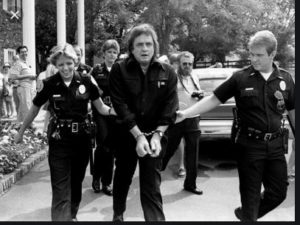
Johnny Cash in irons for a drug bust (I think). How could the Manson Family not get the same treatment? Answer: Because they are state actors.
The Beat Goes On
I found it interesting to analyze a book via its audio version. I’d let it play in the background while going about my day or even while writing this essay, and found myself yelling ‘Shadap!’ each time the narrator droned on with words to the effect that Tom O’Neill didn’t want to deal with evidence that pointed at, or screamed, that there’s a conspiracy afoot!, no matter how obvious or oft-repeated or multi-leveled the evidence was.
And no matter how many times I went through the 16 hours of CHAOS I always seemed to find something that told me that the book is… and I’ll use the word repeated by O’Neill regarding the ‘official story’ of The Event: ‘Smelly.’
But back to Reeve Witson! I’d bet a valued possession that Witson ran this op (with Sharon’s spook-dad, Paul Tate, as second in command). But O’Neill just flat… does not know who Witson was (he died in 1994)! It’s truly, utterly, incredible that O’Neill leaves us with a ‘I don’t know who he is’ bottom line verdict on the ûber-spook Reeve Witson.
It also seems highly unlikely that MM would accidentally miss Witson in his otherwise penetrating essay, especially given the claimed depth of his research, and given that Witson was close to every other major player, including the one MM fingers as the likely hands-on manipulator, Paul Tate, Sharon Tate’s dad and a deep cover operative in ONI, the Navy intelligence branch. (Although I don’t agree with MM’s conclusion here, his revelations about Paul Tate are vital to understanding the over all picture.) Here’s a partial list – all according to O’Neill – of players Witson was close to:
Sharon Tate and the other victims at her house (aside from Steven Parent, an ‘innocent bystander’), Abigal Folger, Wojciech Frykowski, Jay Sebring, plus Roman Polanski; more include Sharon’s mother, and (especially) Sharon’s father, Paul Tate, plus Vincent Bugliosi, the two Smiths (Roger and David, unrelated), who ran the Haight Ashbury ‘free clinic’ (HAFC) and which, given that Louis ‘Jolly’ West (another Witson contact) had an office there (plus other evidence), was a CIA front. The various ‘studies’ that went on there were funded by the National Institute of Mental Health (NIMH), which has now admitted that it was used as a funding front by… guess who? CIA. This is still another nugget from O’Neill, and which he lets lay: ‘Follow no lead that might mean… conspiracy’ is a de facto O’Neill journalistic guideline.
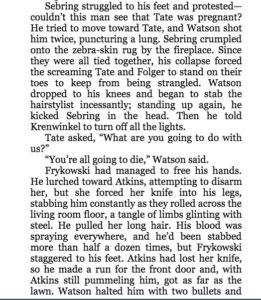
Some of O’Neill’s description of the crime scene. Where did he get this stuff? From Atkins, who changed her story many times? At least tell us.
Addendum: ‘Jolly’ West wasn’t just ‘CIA,’ he was a high-ranking MKULTRA operative, second only to Sidney Gottlieb, perhaps the most monstrous of that whole slimy, psychopathic gang. That MKULTRA was closely conflated with CHAOS/COINTELPRO – their mind control ops overlapped, as did their personnel – is obvious. (Again, context is everything here!) How is it possible that O’Neill couldn’t figure this out?
O’Neill spills an astounding second degree of separation nugget by telling us that Witson’s mother and Sharon’s Mother were close! And he let’s it lay! Excuse me? You wanna talk about an incest-rife situation! But this is how it works in spookdom at the highest levels. Personal relationships are how they know they can trust one another. (By the way, military intelligence is right up there with CIA in terms of spookery and its assets and goals, and Navy Intel is the most powerful of the military spooks; plus military intel doesn’t have CIA’s nagging ‘no domestic shenanigans’ clause in its charter. Point being: Papa Tate’s status as a colonel in ONI means he is one impressive spook. Again, see more on Tate in the MM piece.)
Addendum: When JFK fired Allen Dulles, it hardly affected the latter’s effectual power at CIA, because at the top levels, they all went back to their college days or were related by marriage, blood, or common membership in secret societies like Skull & Bones. A barked order from Dulles after his firing would result in the same snap-to as before it.
Still another O’Neill nugget that passes unnoticed, unremarked upon: Witson was ‘babysitting’ Roman Polanski at a movie studio before the police got to him on the day after the night of the murders. What’s with that? Sounds like a handler’s job. And why would Polanski (after flying in from Europe) first go to a movie studio instead of the police? This is still another ‘tell’ that O’Neill somehow misses, probably because it implies that Polanski was in on the psy op.
Oh, and Witson’s father was sufficiently alarmed at a Witson disappearance that he called the police about his missing son. When was this? The two days surrounding August 8th, 1969, i.e., the time of The Event, during which CIA deep cover agent Witson was apparently a busy boy.
By the way, MGM studio boss, Frank Rosenfeld, told O’Neill that Witson was a high level spook doing super-secret, unacknowledged work for the Agency. Who better should know the workings of CHAOS/Mockingbird than a studio head? (Rosenfeld told O’Neill that he would speak to Witson for hours on the phone, with Witson always on a public phone; O’neill lets this one lay too, failing to ask how a studio head had this kind of time to speak to anyone.)
Addendum: Still again, context. For a well-researched account of CIA’s relationship to all aspects of media and culture itself, see Francis Stonor Saunders The Cultural Cold War; The CIA and the World of Arts and Letters, which tells us that Hollywood big-wigs as clandestine agents (yes, spooks) goes way back, with many stars-of-yore being relied upon informers and even provocateurs. Aside from studio bosses, a partial list would include Gary Grant, Frank Sinatra, Harry Houdini, Marlene Dietrich, Greta Garbo, Sterling Hayden, and… wait for it…Julia Childs!
The latter, being a traveling TV celeb reminds me to recommend game show legend Chuck Barris’s celebrity-as-spook book and movie Confessions of a Dangerous Mind, which the mainstream poo-poos as a ‘fictional biography’ – talk about a contradiction in terms – but which undoubtedly contains a big and nasty chunk of spook-truth.
But aside from Rosenfeld, about 10 others, including Witson’s ex-wife and daughter, repeated the Witson-as-spook litany, some even re-detailing how utterly ‘secret’ and ‘unacknowledged’ Witson’s CIA work was. And the one unacknowledged op that is of interest, according to O’Neill’s title, is… yes, CHAOS. Knock, knock. You there, Tom? Wake up!
How much further need I go? Are you getting the picture?… How about this biggie, according to O’Neill:
On the first day of the aftermath (during Witson’s familial absence), Witson called Sharon Tate’s friend and photographer, Shahrokh Hatami, to alert Hatami that Sharon and friends had been murdered. But get this: Witson made the call 90 minutes before the maid discovered the bodies. What better evidence that an individual
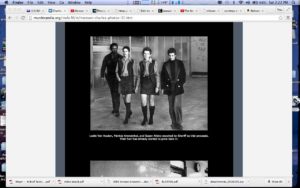
This is about as glum as you’ll see any of them, still no cuffs. (I was unable to find ANY photos of the girls in restraints. None.
participated in a crime could there be than foreknowledge?
That O’Neill never connects Witson’s foreknowledge of the crime to the many testimonies (some by police detectives) that Manson and Witson together buggered the crime scene evidence before the cops got there, tells us more about Tom O’Neill than anyone else. How could an ‘obsessive’ researcher not understand that these two tidbits reinforce each other?
Regarding the most significant, or at least the most public single ‘official’ player in the farce, and the slimiest: Vince Bugliosi denied to O’Neill knowing Witson, in spite of multiple players who testified to seeing them together on multiple occasions. (Bugliosi shoots himself in the foot on this, since he testified under oath that Witson had brought him Hatami as a witness, and was there for Hatami’s interrogation.)
So I’ll ask a question that O’Neill leaves hanging: Why would the legal big shot in The Event deny knowing someone else we know was heavily involved, with foreknowledge of the crime? This in fact would be a pattern with Bugliosi, at the trial and in his book, Helter Skelter. Both instinctively and for good reason, Bugliosi would avoid even mentioning fellow black op spooks, other than those with whom he had no choice, such as the ‘perpetrators’ in The Event. Aside from Witson, spooks like Manson’s ‘parole officer,’ Roger Smith, conspicuous in his absence at the trial and in Helter Skelter.
A Man For All Reasons
One of the hordes of ‘unexplainables’ that O’Neill agonizes over (then gives up on) is the fact that Bugliosi did not call Manson’s parole officer, Roger Smith to the stand during the trial, and indeed, on the surface this is a great question. (He also hardly mentions Smith in his book.) But in the context of the above observation – that a planner of the op would not want to call attention to other important players – it becomes obvious why Bugliosi would keep Smith out of the picture.

From anyone who believes the Tate murders were real, I’ll need an explanation for images like those you see here, among other evidence.
One of Bugliosi’s nightmares must’ve been an image of a defense attorney asking questions about how and why Manson – who was on parole from a long stretch in federal prison – in the months before The Event kept skating on clean busts; any one of perhaps a dozen of the pre-Event arrests would have sabotaged The Event before it could get off the ground. (This should sound familiar to JFK researchers, i.e., how the patsy Oswald kept getting out of scrapes…)
It was Roger Smith who was behind the catch and release phenom, as O’Neill knew only too well. Yet he never deals with the obvious implication that Smith was Manson’s CIA handler. This never comes up because O’Neill avoids the obvious conclusion that The Event was a CIA (plus COINTELPRO) black op from the ground up, with Charles Manson the primary on-the-ground agent provocateur. And again we have an example of O’Neill’s breaking of the implied promise to the reader in the title to his book – a promise to tie together CHAOS, Charles Manson, and the CIA (plus his ‘Secret History of the Sixties’ balderdash).
Addendum: Tom, if you’re reading this, think about it: Every ‘unexplainable’ in your book would come into clear focus if The Event were a black op. Every one of them. But you know this, don’t you, Tom, being a Mockingbird kind-of-a-guy.
Smith’s role as Manson’s ‘protector’ — the government official most behind the ‘catch and release’ phenomenon — applied not only to Manson but to his ‘girls’ (plus Tex Watson), the supposed perpetrator’s of the Tate/LaBianca murders.
Evidence of this O’Neill cover up is not only in subtext all over his book, but in interviews he did to promote it. Like

But what happened to Sharon Tate? you ask. This is ‘her sister Patti’ matched with the actress. (See the MM essay for more…)
the following from a recent podcast:
But I took the documents I have that showed a pattern of the catch-and-release to a retired district attorney named Lewis Watnick, and he’d been the DA of Van Nuys. I laid out all the documents in front of him and he studied them very closely. He basically shook his head and he said, “You know, sometimes this is explained by just pure incompetence, you know, bureaucratic mix-ups. People get… But this is not that.” He said, “This man was deliberately released again and again and again, when not only should he have been charged, but he should have been violated by his parole officer.” He goes, this is all in his words, he kept saying, “Chicken shit. This is chicken shit.”
And how could O’Neill miss the implications of this quote from one of the L.A.P.D. detectives on the case…
“It’s like Manson had God on his side when all these things are going down, or else somebody was watching every move he made, somebody was controlling from behind the scenes. Somebody saw that no parole hold was placed. .. somebody very high up was controlling everything that was going on and was seeing to it that we didn’t bust Manson.”
–Preston Guillory, ex-LASO Deputy who participated in the Spahn Ranch raid
The reason O’Neill is so perplexed over Bugliosi’s failure to call Smith to the witness stand, is that of all the players, Smith knew Manson best, not only having been his official ‘overseer’ but in his role at the Haight Ashbury Free Clinic (HAFC), where Manson and his girls made frequent appearances. ‘Why why why’ O’Neill keeps asking, didn’t Bugliosi subpoena Smith to testify? The obvious answer is that Roger Smith is a doozy of a spook-example, a guy who, like good old Reeve Witson and Bugliosi himself, wore many hats in The Event as black op. Let’s quote MM for more on Rog:
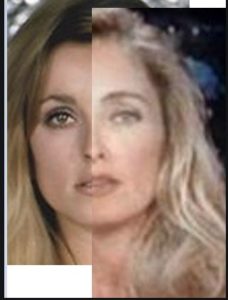
Sharon/Patti. Is this actually one woman? Sure looks like it. Only difference is in the eye makeup. Not a word in CHAOS about THIS kind of evidence.
Roger Smith… was Manson’s parole officer in 1967 before “establishing a drug counseling treatment program associated with Haight-Ashbury Clinic in 1968.”4 [HAFC for Haight Ashbury Free Clinic] Coincidence, right? No, not really. In his book [The Family], Ed Sanders calls him Roger Smith on one page, then calls him Dr. Roger Smith on the very next page. Parole officers aren’t normally doctors of medicine. What did Roger Smith do, attend eight years of medical school and do a residency between 1967 and 1968? No. Roger Smith was Manson’s handler, not his parole officer. Once Manson was set up in his new role, Roger Smith moved to the Haight-Ashbury operation, which was nothing more than a CIA front. Curiously, Roger Smith also took in Manson’s baby Pooh Bear as a foster child when the baby’s mother Mary Brunner was arrested in Mendocino in June, 1968. Handlers do that sort of thing. Parole officers and doctors don’t. (end quote)
If the reader is muttering that Smith as Manson’s CIA handler is just a bald assertion, with only circumstances to back it up – and assuming that this subject is of interest — I would again ask he/she to review the MM essay, not only for more evidence on Smith’s role in The Event, but for the all important context, mainly the absurd amount of anomalies that can only be explained by The Event’s having been a black op, i.e., planned and carried out by spooks.
Addendum: I’ll answer the big question that might be on the reader’s mind right now, the question being, black op or no, ‘How do we know the murders were faked?’ Maybe the same team that killed the LaBiancas also did the folks at Cielo Drive.
For one thing, we have Paul Tate’s involvement. As a high level spook, his family would be off limits to ‘wet work’ (bloodshed). As in the mafia, allied spooks do have a code: Mostly, they don’t kill each other, but they absolutely don’t mess with each other’s families.
For other evidence of the faked deaths, see the MM essay, especially the autopsy photo analysis, plus the evidence that Sharon resurfaced as her ‘sister’, Patti.
For one more indication that Papa Tate was a participator in the op, let’s go back to MM:
And yet another red flag: the eyeglasses that were found by the blue trunks [in the Tate house] were given to Paul Tate [Sharon’s father, a Military Intel Agent], “who held them for two weeks trying to locate the owner, who would have been a prime suspect.” You have to be kidding me. No one thought this was odd? Is it common practice in a police investigation to give or loan evidence to a family member of one of the victims? Of course not. It is just more proof that military intelligence had access to not only the crime scene but also the artifacts in it. If any discrepancy arose, Paul Tate was there to fix it. [MM fingers Tate as the overall handler of the op; I
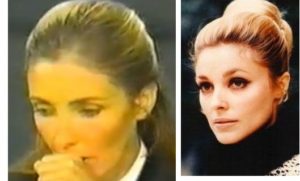
A good one. Sharon has ‘pixie’ ears with a notch on her left one. That’s Sharon on the right and ‘Patti’ during a 90s interview. Again, the eye makeup is the only difference…
disagree here, seeing that role played by Reeve Witson]
Although Smith was Manson’s prime protector, aside from Witson there are many more, on all levels of law enforcement and the legal system. For example, out on parole in 1967, Manson missed parole appointments throughout 1967, yet was never brought up on violation. Of interest here is his meeting with attorney George Shipley right before his release.
Shibley was one of the most high-profile attorneys in California at the time, and, until his death was representing Sirhan Sirhan in his appeal. Why would this legal big shot meet with a scumbag convict before release from a 7-year stretch? Logic (and the process of elimination) tells us Shibley was some sort of handler or contact that helped Manson in whatever deal he had cut with the spooks. (If Shibley was working for the PTB, he would not have given his legal all for Sirhan. Given that Sirhan has never gotten out in spite of the mountain of evidence that he was a patsy, Shibley may have been damage control in the op that killed RFK.)
Manson was arrested for marijuana possession in May, 1968, and for counterfeited driver’s licenses in April, 1968. He was arrested and briefly jailed in June, 1969, for rape. Any of those event should have landed Manson back in jail, but he always managed to walk. O’Neill never properly deals with this gigantic red flag.
Then There’s ‘The Raid’
I’m going to let MM fill you in on this aspect of the black op that was The Event, still another bust the Family walked away from; and this one was after the murders…
And another red flag: when the police raided the Spahn’s Ranch on August 16 (one week after the Tate murders), they took a film crew along. Do the police normally take a film crew along on raids? No. Do they use search warrants with dates that are wrong by three days? No. The search warrant used on August 16 was dated August 13, but since those being filmed were in on it, it didn’t matter. [MM got this detail wrong: search warrants are good for 10 days, so the warrant was viable] Who was going to sue? Although we are told by Bugliosi and Sanders and others that Manson was franticly preparing for the move out to the desert on August 17, he was conveniently on-hand for the round-up on the 16th, making most of the still pictures, dead-center, with the sign “Spahn’s Movie Ranch” conveniently behind him in-shot.
Despite finding stolen guns, stolen cars, stolen credit cards, piles of drugs, under-aged girls, and a hundred other things, everyone once again skated, supposedly for “lack of evidence.” Manson was arrested at the same place again six days later for dope, fornication, and public nudity. Again he skated. It was too soon. The authorities wanted to let the story build a bit longer, let Los Angeles stew in fake fear a few more weeks. The FBI apparently let the local police look useful, but they weren’t willing to move the story into the next phase just yet. Besides, the date of final capture was already set in the script: October 12, Aleister Crowley’s birthday. That link would serve double duty in the story. One, it would lend the story a further element of the macabre. Two, it would cover the tracks of the spooks, as usual. The secret services have been hiding behind Satanism since the late 19th century, and Crowley’s career was created specifically for that purpose. [my emphasis: this is an absolutely vital aspect of the op that O’Neill completely misses]
Addendum: Lotsa stuff to chew on in the above but regarding MM, notice how ‘he’ (the committee) contradicts

Spahn ranch raid. According to MM, the cops aren’t even ‘real’; their uniforms are not regulation. He might be right. Which would explain why the 27 defendants all walked the next day. Christ, what a joke!
himself in his denial that the PTB are into the occult. No one other than those obsessed with the occult would possibly know that Crowley’s birthday is October 12th, so how does this add any ‘macabre’ to the crime? But if the synchronicity is not a coincidence, then we do have an indication of an occult reference. (There are many others, no dealt with here.)
For some horrific yet darkly hilarious revelations on the PTB obsession with the occult (as opposed to non-interest), check out the limited hangout book, The Most Dangerous Book in the World; 9/11 as Mass Ritual by S.K. Bain. (If you use Amazon maybe glance at my review of the book, which garnered twice as many ‘Helpful’ votes as number two, and is the first listed on the page.)
In his book O’Neill doesn’t fail to mention the incredible catch and release game that was going on with Manson and law enforcement in the months before The Event, but again I have to ask how he could possibly have missed what this meant?

One of the other ‘movies’ made at the Spahn ranch. The separation between H-wood and spook Intel is now nonexistent.
O’Neill’s excuse for avoiding ‘conspiracy theories’ is that he could find no documentation proving, say, Reeve Witson was CIA. Well, I have some journalistic news: In a situation wherein a writer knows he is not going to get ‘formal’ evidence that someone is working for – or an event was staged by – a ‘secret arm of the CIA that even the director (Colby in this case) admits he has no access to’ and whose raison d’être is ‘to destroy the hippie/anti-war movement no matter what it takes’… when a journalist knows the evidence will have to be circumstantial, (and keeping in mind that first degree murder/death penalty cases have been solved by circumstantial evidence)… that is the case he puts forth.
Tom O’Neill puts forth no such case.
The ‘You-Know-Who’ Is In The Details
Again, this essay is partly an investigation into Tom O’Neill’s collusion in keeping us dumbed down regarding the Manson/Tate murders, while reawakening the original Manson-paranoia by splashing/slashing his pages with redundant descriptions of the ‘horrors’ the Family supposedly perpetrated.
In the mode of true pulp fiction (in the ‘lurid and dealing with sensational subjects’ sense) fashion, O’Neill describes
in detail the alleged killings in omniscient third person, although the only ‘witnesses’ that could possibly have the information are the ‘perpetrators’ themselves (everyone else, of course, being ‘dead’), with not a word of caution nor of the provenance of his imagery.
O’Neill chills (and ‘thrills’?) us with purple prose describing bodies ‘…rolling across the floor, a tangle of limbs glinting with steel.’ And ‘He pulled her long hair. His blood was spurting everywhere’…. plus Abigal Folger running on the lawn ‘with her nightgown flowing behind her like an apparition, crying out, “I give up, I’m already dead. Take me!’…
…”then, to Tate, Watkins said, ‘Woman I have no feelings for you… you are going to die and I feel nothing about it…’ ‘Tate cried out for her mother then died.’” (This last bit about her mother is why not tell us how you know this, Tom?)
Bear with this one… ‘
Watson tied Sebring’s hands around his back then his neck. He looped the rope around Tate’s neck and then Folger’s, throwing the final length over a bean in the ceiling. Sebring struggled to his feet and protested, “Can’t you see this woman is pregnant?’ He tried to move towards Tate and Watson shot him twice, puncturing a lung. Sebring crumpled onto the zebra rug by the fireplace. Since they were all tied together his collapse forced the screaming Tate and Folger to their toes, to avoid being strangled. Watson fell to his knees and began stabbing the hairstylist incessantly. [my emphasis]
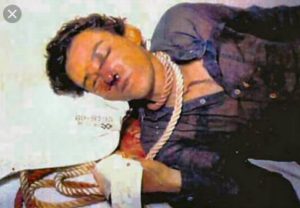
Why show you this ‘awful’ photo of a dead Jay Sebring? Because he’s not dead. This is a 12 hour old corpse’: Do they keep their tans? Look into it if you’re not sure.
It didn’t take much to picture the described behavior, and to find a problem with it. Three people are tied together, a rope around their necks and over a ceiling beam, and one of them ‘crumples’ to the floor. What would happen? If the bitter (free) end of the rope was not well-secured, the rope over the beam would merely slid down, rather than tightening around the other two. No one would have had to stand on their toes to avoid strangulation.
If the reader is thinking that either Watson had hold of the free end or had secured it somewhere, I would reply that Watson was too busy shooting Sebring and then falling to his knees to stab him to do either, and there is no evidence that the rope was secured, either in the above prose description or the police reports.
If the reader is now thinking that this is nitpicking, I would reply that for an ‘obsessive’, twenty-year researcher to relate an impossibility in ‘the crime of the century’ is an example of a trust – the assumed one between a writer and his reader – broken.
My real problem here is that the provenance of these descriptions goes undefined, and given the context – an investigation that should not have assumed anything to be ‘true’ – one must ask for the motive (O’Neill’s) behind subjecting the reader to more than ‘the facts’ as given by documents like police reports and their accompanying photos and diagrams — which themselves are of course… doubtful, to say the least.
And indeed, O’Neill will go on to doubt the veracity of virtually everyone he interviews or researches, but most
especially Susan Atkins, who likely is the source behind the quoted passages. (That I have to speculate that it was she reminds me that the book lacks source or foot-notes, which made my work in analyzing its contents that much harder.) And worse, we’ve heard all this before, in Bugliosi’s book, Helter Skelter, plus The Family and maybe a dozen others. All O’Neill has done here is to shuffle some adjectives and punctuation in the retelling of a half century-old lie.
And the above is not the only example in CHAOS of questionable journalistic prose, if not outright deceit. Although I have no problem with a writer imposing himself upon the story – god knows I did it myself in spades in both my memoirs – I do object to O’Neill’s inserting himself into the reportage, as evidenced above and elsewhere.
Before we move on, let’s not forget the most memorable quote of all, from the ‘head-perpetrator’ at the Tate ‘crime scene’: Tex Watson’s answer to a victim’s query of what he was doing there.
‘I am the Devil, here to do the Devil’s business.’ (see chapter subtitle)
O’Neill doesn’t fail to regale us with this beaut, while, again, not enlightening us as to how he knows the words were ever spoken…
Enough For Now?
I’ve gone a bit off subject, haven’t I? I was supposed to be delineating the in-your-face evidence that Roger Smith was a spook, and Manson’s prime CIA handler. But in an essay wherein one is out to expose not only a hoaxed fifty year-old crime, but a current book continuing that hoax, plus deal with the NLP from a spook-committee’s brilliant limited hangout, one is apt to get turned around in his story-structure…
Tom O’Neill goes on and on about the travails he somehow survived in the twenty year writing of his book, and I’m tempted to do the same with this essay, given that over the past two weeks (since my first listen to CHAOS) I’ve become fairly obsessed myself — mostly about O’Neill and his book, i.e., the attempt to keep us all as ignorant as possible about HTWRW.… I look around my little office-on-wheels…
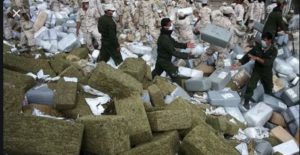
This is where his ‘parole officer’ wanted to send Charlie, to help with ‘research’. Make sense to you? Didn’t bother Tom O’Neill.
…3×5 cards everywhere, many with scrawled outrages on how obvious it is that Roger Smith was Charles Manson’s CIA handler, plus the implications thereof… give me a moment to riffle through them… here’s one in the Smith collection, with one word in big, bold, and a bit shaky letters: MEXICO
Among Roger Smith’s many spooky doings, one was the creation of a study on Mexican drug trafficking, for a federal agency…I can’t find in my notecard disarray which one… but it doesn’t matter since the point is that O’Neill unearthed a document wherein Smith was planning to send Charles Manson to Mazatlan Mexico, said to be the hub of cartel activity… to help in his study…
Let’s think about this. A parole officer wants to send his drug-crazed felon — whom he’s gotten out of back-to-jail trouble at least a dozen times — to the heart of cartel-land to help with a government-financed study… Mmmm.
Does this behavior have the feel of a parole officer… or a… what’s the word? A handler? Give me a break!
Oh, and remember I made a big deal out of Manson’s parole file being on lock down and unavailable as evidence in the trial and how U.S. District Attorney John Mitchell made sure it stayed that way, and how all this was unheard of?
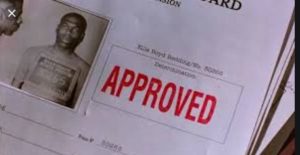
A real parole file. I wonder what Charlie’s looked like. We’ll never know: it’s on permanent lockdown. Ask yourself why.
O’Neill in his book wonders about this too, then drops the matter, after telling us that the file was four inches thick, and that he could only get a look at 67 heavily redacted pages. What? Hey, do you think that maybe in those four inches of secreted files there was stuff about Manson’s trip to Mexico to visit drug lords (it appears he did go) and maybe lots of other stuff that would lead us to the conclusion that Charlie was, after all, ‘working for the government’? The CIA? Operation CHAOS?
D’ya think?
Addendum: I love this one. Although the average parole officer has between 100 and 400 parolees to account for, at the end Roger Smith had… guess how many….
One…
Guess who.
Oh, and just before Smith quit his ‘parole officer’ gig – from over-work with his one client? – he and his wife temporarily adopted Manson’s son, ‘Pooh Bear’ Manson, presumably so fatherhood wouldn’t distract daddy from… well… the upcoming mass celebrity murder he would orchestrate, and which would occur at the perfect historical moment for those seeking to discredit the hippie/anti-war movement…
…but damn I’ve lapsed into what O’Neill considers ‘nutcase conspiratorial’ thinking. Must be the pressure on my cranium from my tinfoil hat… god bless Tom O’Neill for avoiding this syndrome.
And please do keep in mind that I’m getting all this info on Roger Smith from Tom O’Neill’s book, the book wherein the author can’t figure out who Smith is. (Or anyone else.) The book wherein at the end the author – having used terms like ‘confused,’ ‘flummoxed,’ ‘at a loss,’ and so forth – tells us the linchpin of the whole magilla is ‘the real motive for the killings.’
See, O’Neill does a good job in proving that the stated possible motives (in the trial and in Bugliosi’s seminal book on the subject), were both untrue. Not only untrue, but fabricated. (Right, this calls for a Full Stop, so we can do some
mulling.)
O’Neill would lead us to believe that this is the biggie, the new and astounding revelation that makes his book worthwhile. And he does a great job in proving this, via the documents and testimonies re Bugliosi’s multiple perjury suborning and all around connivery; the implication being that we’re done; now we can go home; nothing more to see here, folks!
But wait. Why would Bugliosi commit all these felonies?
So his upcoming book was better, had more oomph!, O’Neill tells us.
I don’t think so. Here’s what I think, keeping in mind the context of our little tale: If Manson (and company) had no motive, then who did? See, if Vince couldn’t come up with a motive, folks might start thinking along these lines, these ‘cui bono’ lines, and the cui bono logic might just go to the operation whose raison d’etre was to ‘discredit or destroy the hippie/anti-war movement’ and to do so ‘no matter what it takes.’ The operation that O’Neill one time finds the gumption to describe as seeing the The Event as ‘exactly what it wanted.’
The operation that is the title of his book (not the subtitle, but the title): CHAOS.
Full stop.
I’m on a roll here folks, and have a lot more to tell you, based on my two weeks of looking into the book that took 20 years to write, but I am currently worn out. (You too, huh? Well, I can sympathize.)
See, there really is a ‘Secret History of the Sixties’ and a lot of it is related to what I’ve called The Event. And there is even more about Tom O’Neill, who he is, and who he is working for.
For example, did you know that Tom’s first editor on the CHAOS project was/is a Mockingbird operative of the first magnitude? A scumbag who produced a major magazine piece and a book ‘Debunking 9/11 Conspiracy Theories’?
And did you know that Tom’s co-author works for a magazine (in the important post of online editor) that even Wikipedia brands a major CIA asset?
One last goddamn addendum: Being a book writer myself, I have a bunch of questions for Tom O’Neill, but the big one is why he needed a co-author (Dan Piepenbring), as opposed to an editor. I mean here we have this well-respected, longtime magazine writer spending 20 years writing a book, then, somehow, he needs a co-author? And why, given all the constant whining and supposed self-reflecting in the book, is this co-author never mentioned? (His first editor, the Mockingbird spook James Miegs, is often mentioned as the guy who kept O’Neill afloat financially for several years in the beginning: again, ‘handler’ ring a bell? By the way, if you need proof of Meigs’s-as-spook/mole, check out this debate on 9/11.)
Another question is whether O’Neill knew about his co-author’s last assignment, which was to ghost write a memoir by the rock star Prince, who was threatening to put in his book the real history of the music business, but suddenly died of mysterious causes; so the co-author, O’Neill’s co-author, not only finished the ‘memoir’ but put his own name on it as the sole author. If this sounds familiar you’re probably thinking of Michael Jackson, who died in a similar manner after making the same threat to write about the music biz.
Seems like O’Neill was more cooperative in the stuff he put in his book. I mean since he’s still among the living. \
(Put the above under ‘I’m just sayin’.)
I just don’t have the energy to get into other details right now. Nor do I have the energy to tell you how I know that none of the celebs at 10050 Cielo actually died.
How about I do a Part Two of this essay, for some mopping up? Maybe do it as an Open Letter to Tom O’Neill?
Let me know if you think this is a good idea.
Allan Weisbecker (Outback Arizona, December 15th 2019)
#
A reminder: Click here for the spook committee ‘Miles Mathis’s’ essay.
But after being wowed by MM’s research, don’t forget to read my Open Letter to Miles Mathis.
One last question, and which I am often forced to ask: Why am I the only one to notice any of this stuff? Is there something wrong with the alt media? (See my other blog posts.)
If you support any alt media outlets, like, say, James Corbett (see my Letter to him), how about steering that money my way? I only ask for $3.25 a month (gas money for my travels), and I find it encouraging to get those Paypal notices.

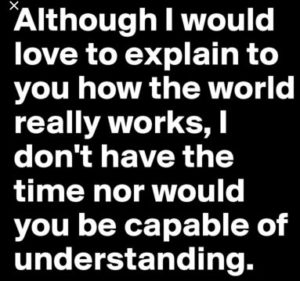
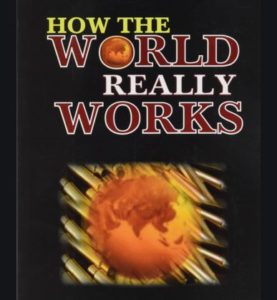
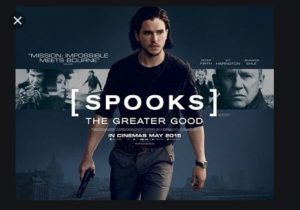
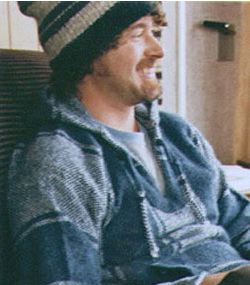
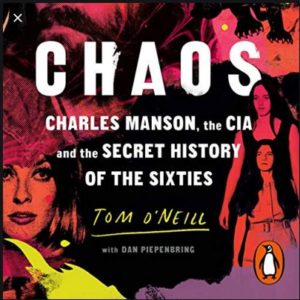
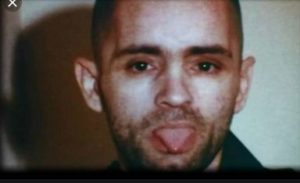
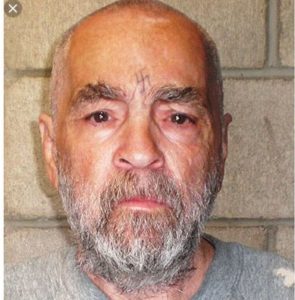
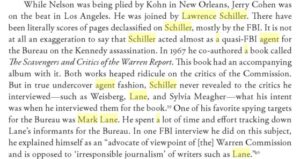
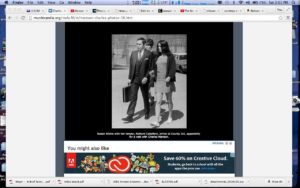
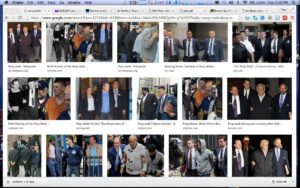
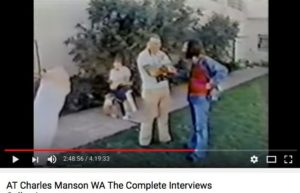
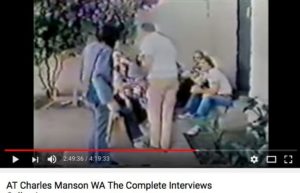
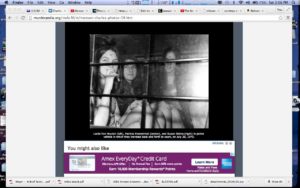
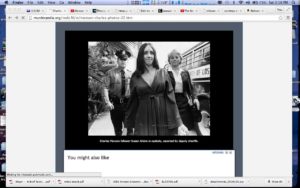
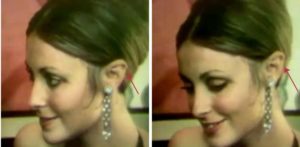
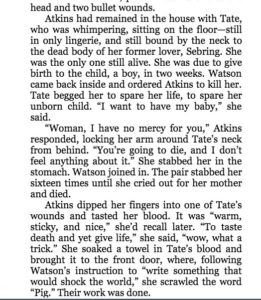
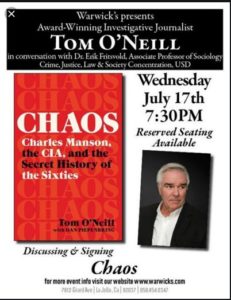


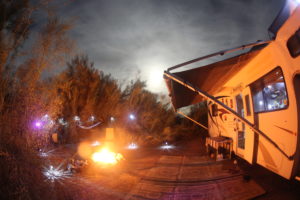
85 comments for “What Started as a Book Review…”